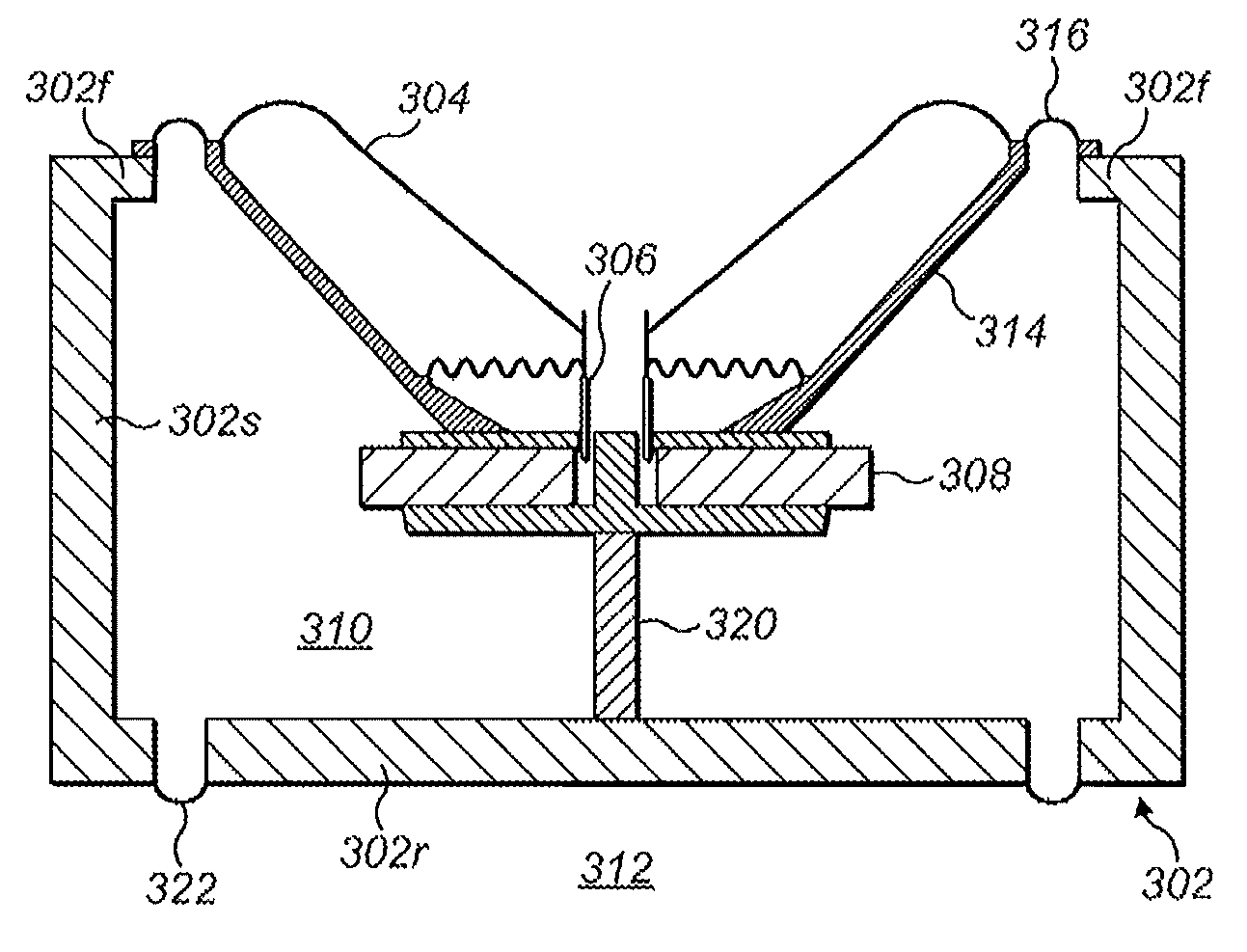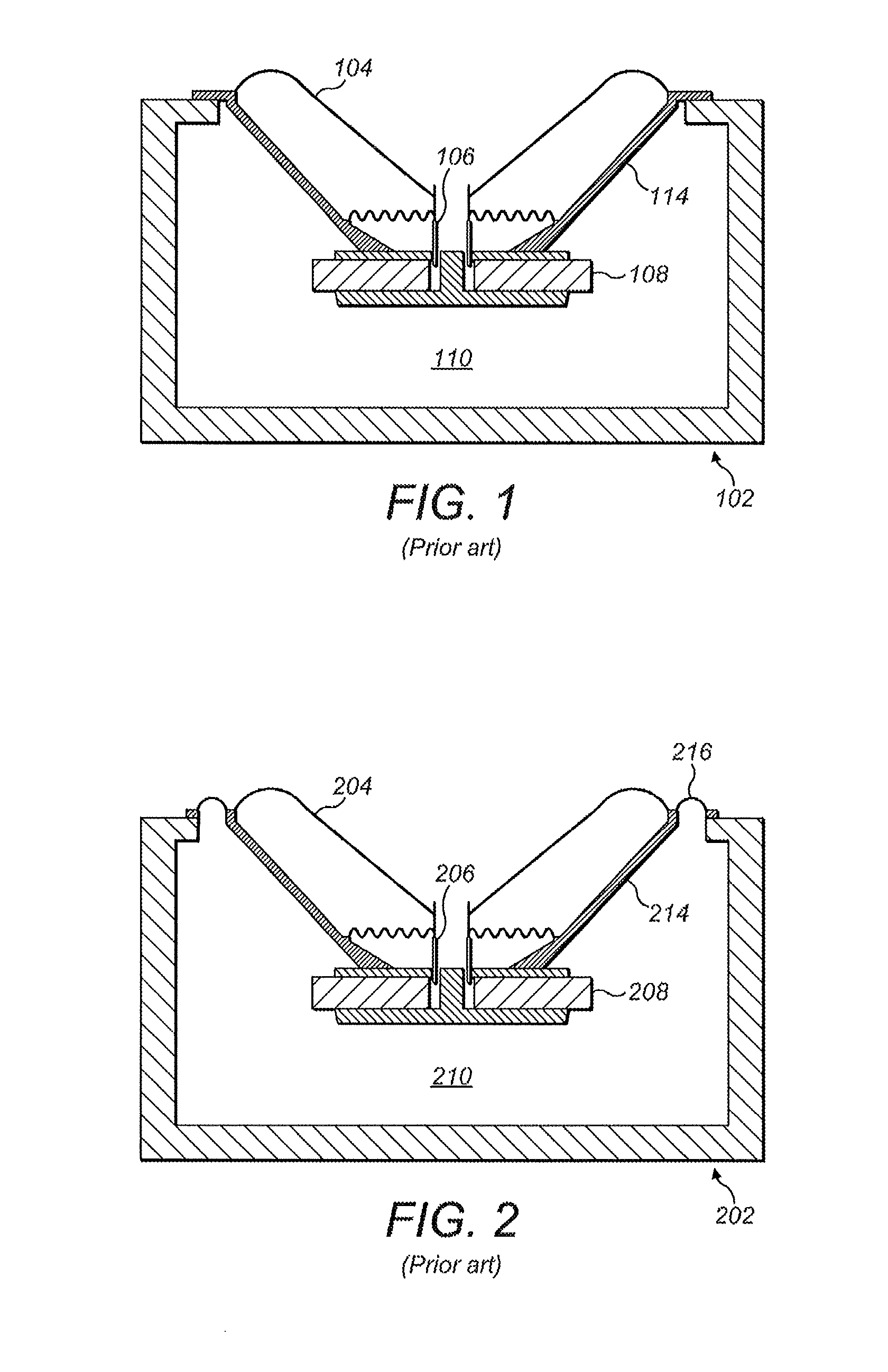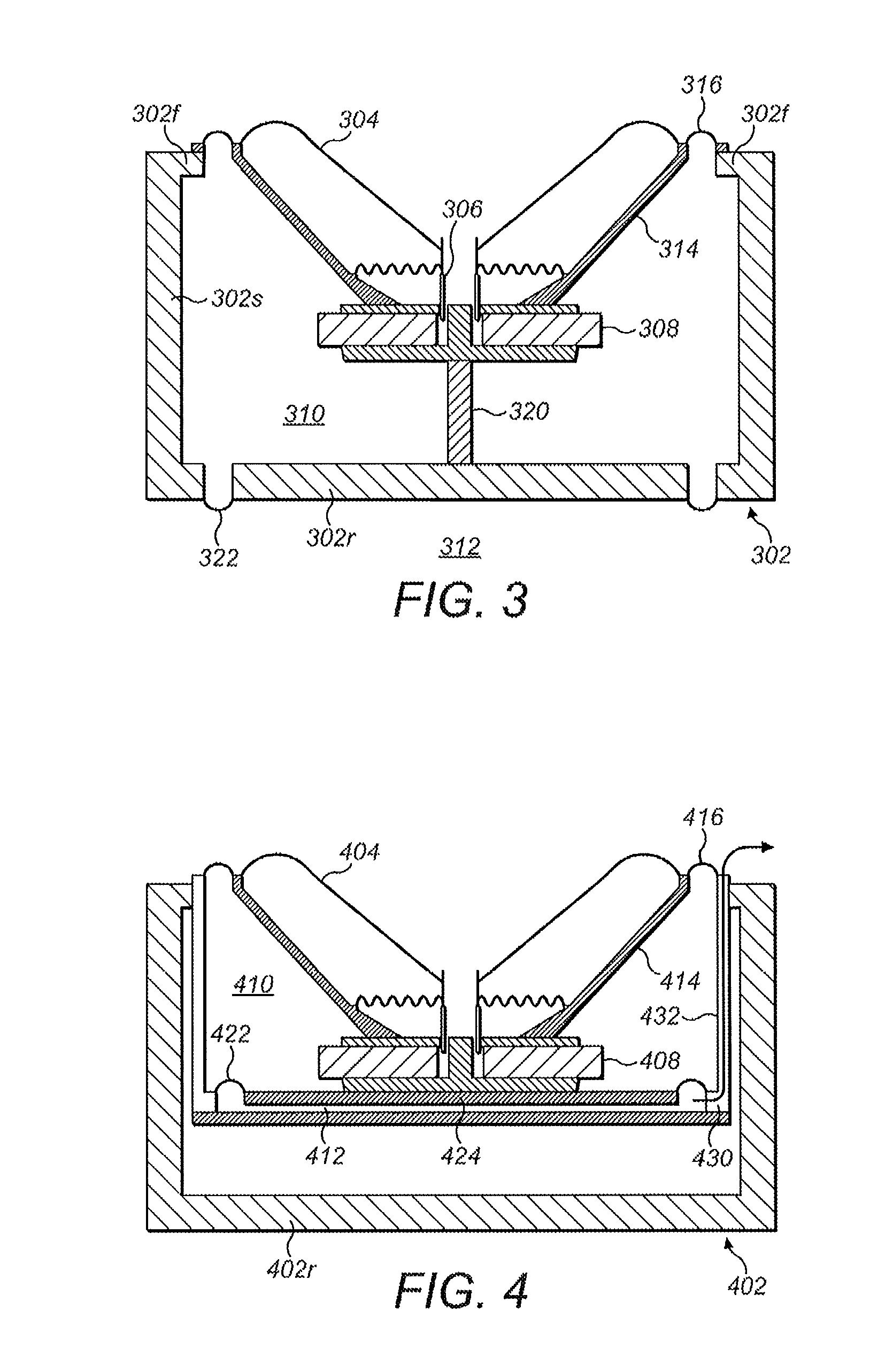Decoupled drive unit for a loudspeaker enclosure
a drive unit and enclosure technology, applied in the field of loudspeakers, can solve the problems of loss and/or distortion of acoustic output, inability to make the cabinet radiate as a rigid body, and inability to achieve the effect of ensuring the performance of the loudspeaker unit, ensuring the effect of good balance and matching
- Summary
- Abstract
- Description
- Claims
- Application Information
AI Technical Summary
Benefits of technology
Problems solved by technology
Method used
Image
Examples
first embodiment
[0035]A balanced decoupled loudspeaker cabinet 302 is shown in FIG. 3. The exterior of the generally cuboidal cabinet 302 is formed by six panels including side panels 302s, a rear panel 302r and a front panel 302f. The loudspeaker cabinet 302 includes a mid-bass drive unit, which comprises a diaphragm 304 driven by a coil 306 reacting against a field produced by a magnet 308. The coil 306 vibrates the diaphragm 304 in sympathy with an applied electrical signal to create a sound. Sound radiates from the diaphragm forwardly through the aperture in the front panel 302f of the cabinet 302. The magnet 308 is housed in a chassis 314 that is physically connected to, but vibrationally decoupled from, the front panel 302f by means of a resilient mounting 316, in the form of a silicone ring. The magnet 308 is therefore effectively decoupled from the cabinet 302.
[0036]A first volume 310 in the cabinet 302 acts as an air spring such that, on application of an appropriate electrical signal to ...
fifth embodiment
[0042]FIG. 7 shows a loudspeaker cabinet 602 according to a In this embodiment, the loudspeaker drive unit comprising the first chassis 614, magnet 608, coil 606 and diaphragm 604 are arranged in inverted formation and the enclosure 602 is designed for installation in a cavity in a wall of a building, for example a house, cinema, recording studio or the like. The first chassis 614 has a open structure defined by four legs 614l extending inwardly from an annular ring structure 614r. The diaphragm 604 is positioned rearwardly of the legs and sound radiates though the open regions between the legs 614l. The first chassis 614 holds the magnet 608 and is also connected to and coupled with an interior panel 624. The second chassis 630 is coupled and connected to the front of the cabinet by means of a conventional bond. The legs of the second chassis 630 are hollow and define vents 632 for venting air to and from the second volume 612. The first chassis 614 is connected to the second chas...
PUM
 Login to View More
Login to View More Abstract
Description
Claims
Application Information
 Login to View More
Login to View More - R&D
- Intellectual Property
- Life Sciences
- Materials
- Tech Scout
- Unparalleled Data Quality
- Higher Quality Content
- 60% Fewer Hallucinations
Browse by: Latest US Patents, China's latest patents, Technical Efficacy Thesaurus, Application Domain, Technology Topic, Popular Technical Reports.
© 2025 PatSnap. All rights reserved.Legal|Privacy policy|Modern Slavery Act Transparency Statement|Sitemap|About US| Contact US: help@patsnap.com



